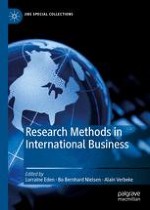2020 | OriginalPaper | Chapter
4. What’s in a p? Reassessing Best Practices for Conducting and Reporting Hypothesis-Testing Research
Authors : Klaus E. Meyer, Arjen van Witteloostuijn, Sjoerd Beugelsdijk
Published in: Research Methods in International Business
Publisher: Springer International Publishing
Activate our intelligent search to find suitable subject content or patents.
Select sections of text to find matching patents with Artificial Intelligence. powered by
Select sections of text to find additional relevant content using AI-assisted search. powered by
